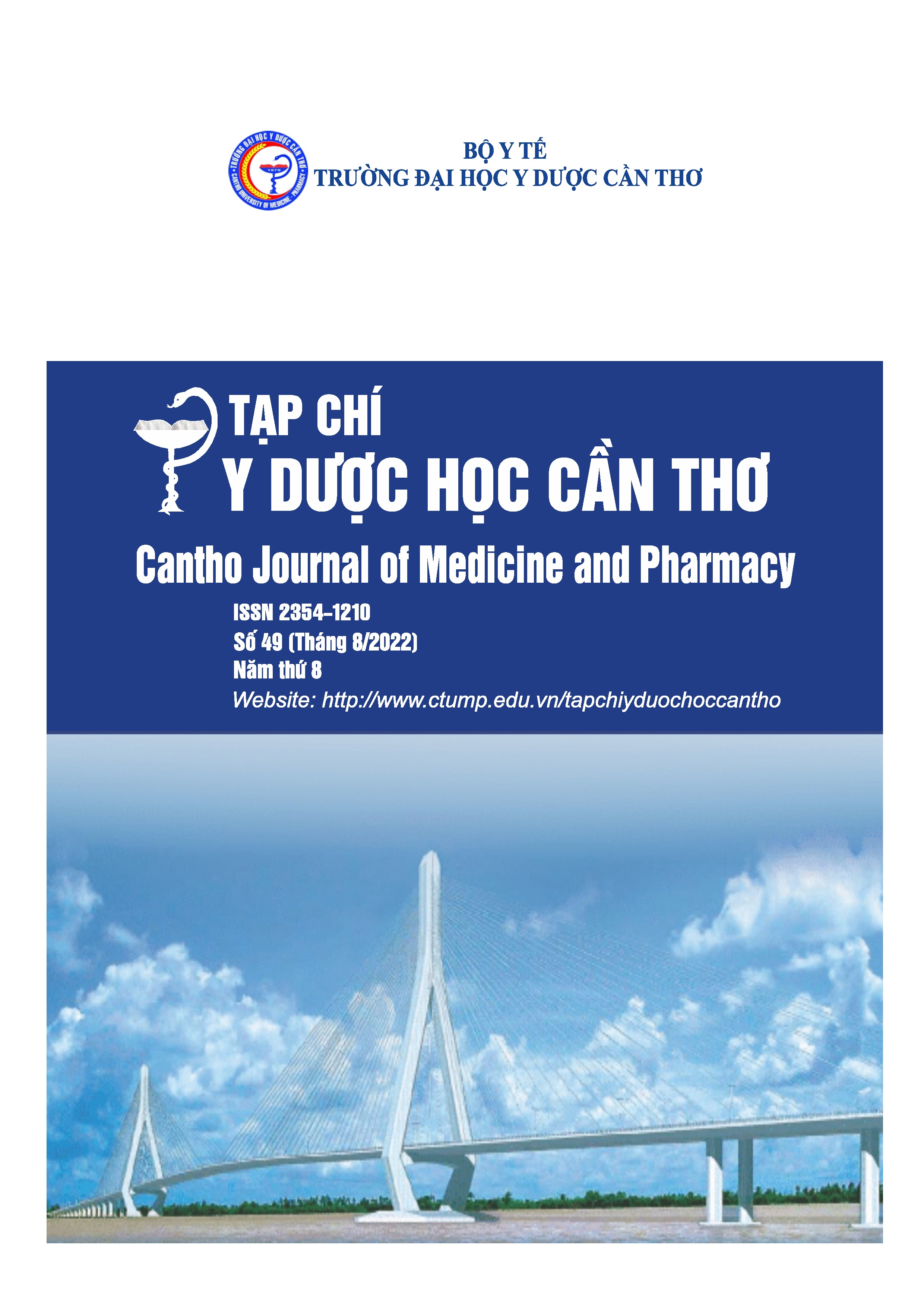RELATED FACTOR TO CERVICAL CYTOLOGICAL TRANSITION IN WOMAN IN CAN THO CITY
Main Article Content
Abstract
Background: Cervical damage was changed over time, the progression and regression of these lesion were effected by many factors. Objectives: To associate factors related to cervical cytological transition in woman in Can Tho city 2021. Materials and methods: A cross sectional search with 213 woman in 9 districts in Can Tho City. All woman was interviewed and test PAP, VIA, and histopathology to diagnosis cervical cytological transition and then to analyze to find factors related to this changing. Results: Woman from 18 to 45 years old had the risk of cervical cytological transition over 1.7 (95% CI 1.1-2.7) with binary logistic test but with multivariance logistic test we did not find risk of this factor. Woman with post genital infection had the risk 2.2 times of cervical cytological transition with 95% CI: 1.3-3.7 in binary logistic test and 2.9 time in multivariant logistic test with CI 95% 1.1-7.1. Conclusions: Genital infection was the risk of cervical cytological transition.
Article Details
Keywords
PAP, VIA, histopathology, cervical cytological transition, risk factors
References
2. Trần Ngọc Dung và cộng sự (2016), “Nghiên cứu tình hình nhiễm HPV ở phụ nữ thành phố Cần Thơ bằng kỹ thuật PCR”, Sở Khoa học - Công nghệ thành phố Cần Thơ.
3. Đặng Thu Hà (2014), “Kết quả phết tế bào cổ tử cung trên 2.132 phụ nữ tại tỉnh Lâm Đồng năm 2013”, Y học thành phố Hồ Chí Minh, tập 18, số 5, tr.80-83.
4. Brenda E Sirovich (2004), “The Frequency of Pap Smear Screening in the United States”, Journal Gen Intern Med, 19, pp.243-250.
5. Bruni L, Albero G, Serrano B et al. (2019), Human Papillomavirus and Related Diseases Report, Viet Nam. ICO/IARC Information Centre on HPV and Cancer, HPV Information Centre.
6. Bruni L, Albero G, Serrano B et al. (2019), Human Papillomavirus and Related Diseases Report, ICO/IARC Information Centre on HPV and Cancer, HPV Information Centre.
7. Eman Al Sekri, Asma Al Musalhi, Khadija Al Abri et al. (2021), Prevalence of Cytological Abnormalities in Papanicolaou Smears and Risk Factors for Cervical Cancer Among Women in Muscat, Oman. DOI: https://doi.org/10.18295/squmj.4.2021.041.
8. Hirut Teame, Adamu Addissie, Wondimu Ayele et al. (2018), “Factors associated with cervical precancerous lesions among women screened for cervical cancer in Addis Ababa, Ethiopia: A case control study”, Plos One, pp.1-13.
9. Hyuna Sung, Jacques Ferlay, Rebecca L Siegel et al. (2021), “Lobal Cancer Statistics 2020: GLOBOCAN Estimates of Incidence and Mortality Worldwide for 36 Cancers in 185 Countries”, CA cancer j clin, 71(3), pp.209-49.
10. Jiraporn Lertcharernrit, Panya Sananpanichkul, Wineeya Suknikhom et al. (2016), “Prevalence and Risk Assessment of Cervical Cancer Screening by Papanicolaou Smear and Visual Inspection with Acetic acid of Pregnant Women at a Thai Provincial Hospital”, Asian pacific journal of cancer prevention, 17(8), pp.4163-4167.
11. Joseph P Connor and Ellen M Hartenbach (2004), Treatment of cervical entraepithelial neoplasia. Gynecology & Obstetrics, Chapter 3, 4, University of Wisconsin Medical School.
12. Paul C. Mayor, Kevin H. Eng, Kelly L. Singel et al. (2017), “Cancer in primary immunodeficiency diseases: Cancer incidence in the United States Immune Deficiency Network Registry”, Journal of Allergy and clinical Immunology, 141(3), pp.1028-1035.
13. Rebecca Siegel, Kimberly D Miller, Ahmedin Jemal (2019), Cancer Statistics- 2019. CA Cancer J Clin, 69(1), pp.7-34.
14. Sabeena Jayapalan and R S Bindu (2020), “Papanicolaou smear: A diagnostic aid in sexually transmitted infections”, Indian J Sex Transm Dis AIDS, 41(2), pp.143-148.


